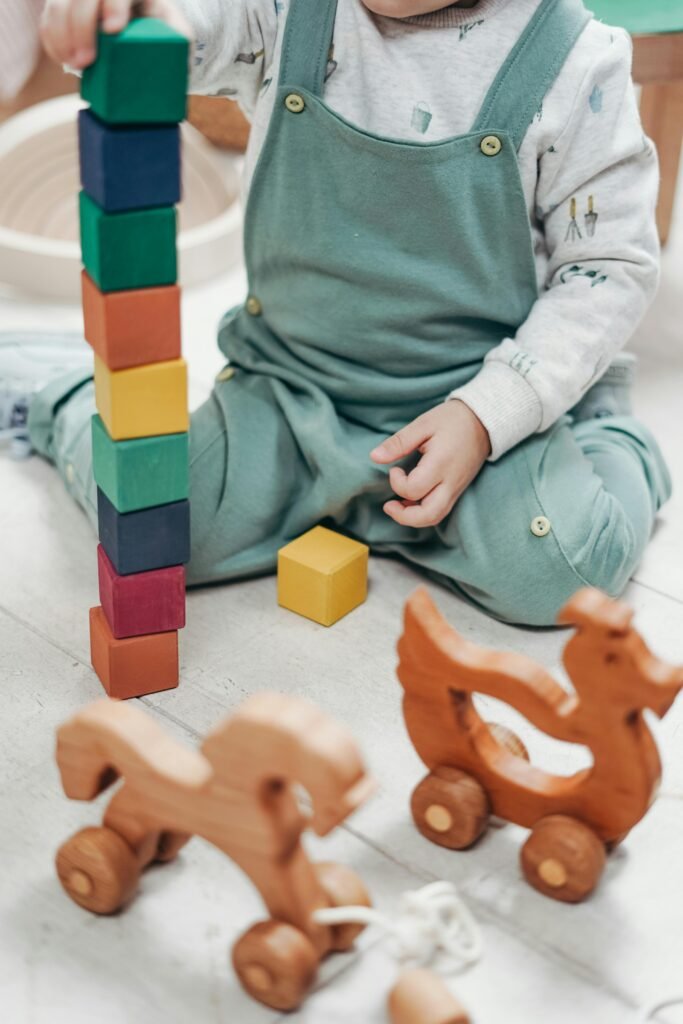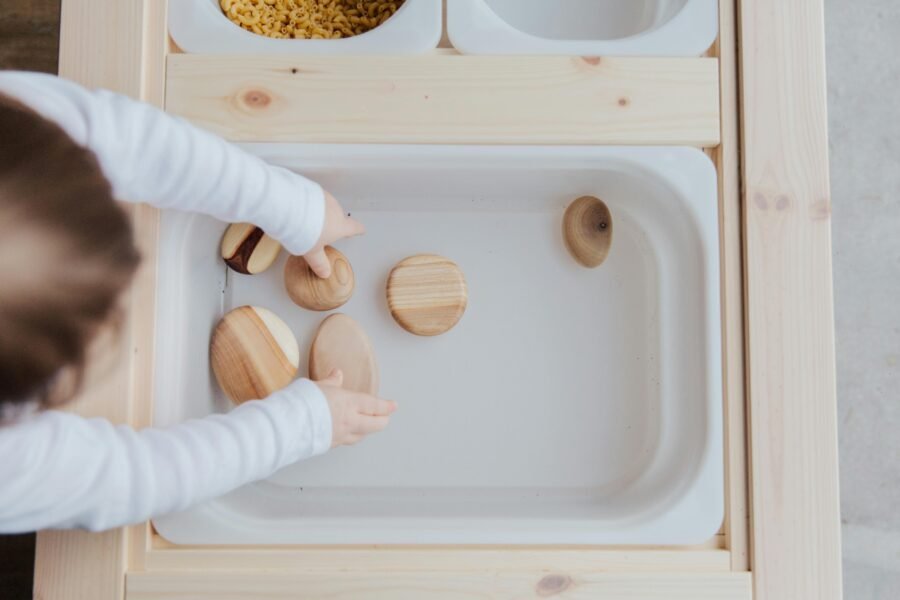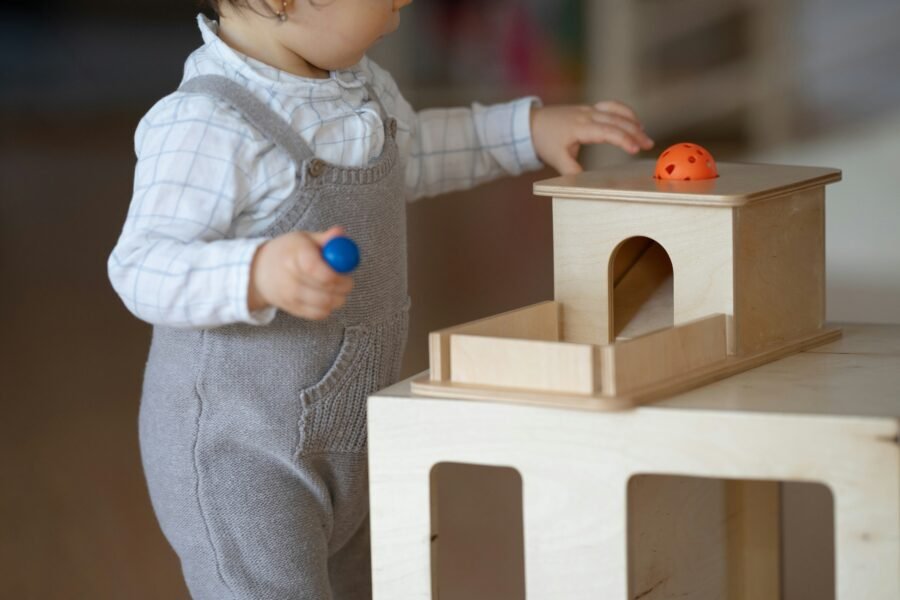You may have noticed your toddler transforming an ordinary household item into a monster truck, ice cream cone, a puppy, or a rocket ship. In these moments, you are observing them use their imagination with open-ended play!
What is open-ended play?
Open-ended play is unstructured play with no limitations. There are no rules or “right” or “wrong” ways to play. It creates space for your little ones to use their imagination and creativity to create magic.

Benefits of open-ended play
A crucial time to support your little one with purposeful play and skill development is between the ages of birth to five when the brain is rapidly developing.
Open-ended play is a great way to work on physical, social, cognitive development and work on important life skills while being an effective technique for emotional regulation!
- Boosts confidence and creative problem-solving
- Provides space and safe moments for decision-making and autonomy
- Encourages independent play
- Promotes concentration and focus
- Helps children understand and express their feelings by acting them out or exploring different situations (like when they pretend play!)
- Teaches sharing, turn taking, and cooperation
- Fosters a positive attitude towards play and learning in a way that aligns with your child’s interests
How parents can encourage open-ended play
- Minimize guidance and rigidity in play – Try not to provide instructions or show demonstrations with toys and activities. Avoid correcting the ways that they use the toys.
- Limiting screen time – Excessive screen time can be overly stimulating for children, leading to reduced focus and concentration. This can make open-ended play feel “boring” or insufficiently engaging, making it difficult for children to sit through play activities, especially open-ended play where they aren’t provided with structure and guidance.
- Less hurry – Allow more time for play without rushing or hurrying into the next task. Give your child enough time to explore their play items and use their imaginations.
- Be intentional with toy purchases – Choose toys that encourage creativity and offer multiple ways to play, rather than a single, predefined use.
- Opt for less familiar toys – Toys that are not tied to a specific story or characters from books or television offer more room for imagination, as they allow your child to create their own play scenarios.
Overall, these benefits aren’t just for kids – they help parents too. When your little one plays independently for longer and can get creative with the toys they have, it makes life a little less overwhelming and buys you back some time! You won’t need to buy as many toys, rely on screen time, or constantly feel the need to entertain them.
Recommendations for open-ended play items
The best types of play items for encouraging open-ended play are those without specific instructions. Consider items like wooden or foam blocks, Lego, pegs, dolls, magnetic tiles, arts and crafts, and water play. Here are some of our favourites:
- Magna-Tiles
- Lovevery ‘The Helper Play Kit’
- north&nova foam play sets
- Ramp toys
- The Montessori Room collection
- Cars or monster trucks
- Toolkit for kids
- Watercolour set
- Sensory or water table
References:
Michigan State University Extension. (2020, February 21). The value of open-ended play. Michigan State University. Retrieved from https://www.canr.msu.edu/news/the_value_of_open_ended_play



Leave a Reply